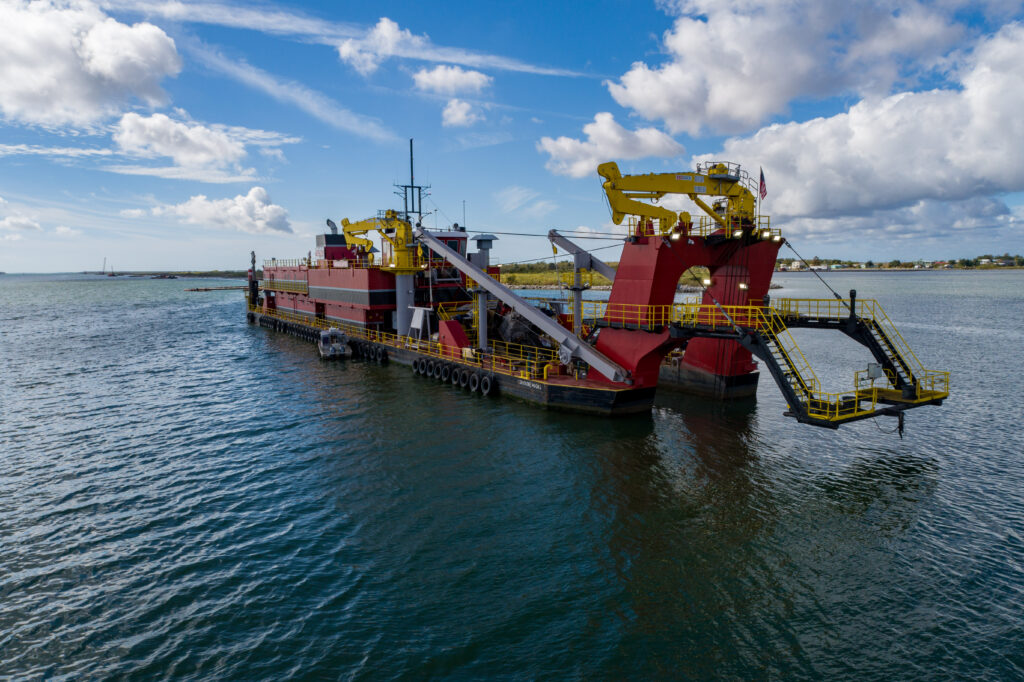The Storied Tale of the Maritime Industry
A 6-Part Series: The Rise & Fall of American Shipbuilding & Legislative Efforts to Revisit the Jones Act
Part I:
A Brief History – The Jones Act
Prior to World War I, the United States relied on a combination of U.S. and foreign-flagged vessels to conduct trade in U.S. coastal waters and inland waterways. As the war approached, allied countries removed their vessels from U.S. commerce to aid their efforts, and adversaries withdrew their fleets in hopes of crippling the U.S. economy by disrupting maritime trade.
In total, the United States’ fleet of vessels was significantly depleted at the onset of World War I, requiring the United States to rapidly invest in its maritime construction capacity to meet both the ongoing needs of commerce and those of the military for war production.
To prevent such a crisis from occurring again, Congress enacted the Merchant Marine Act in 1920. Commonly known as the Jones Act, its purpose was two-fold: to promote a robust maritime industry and protect American maritime workers. As a result, U.S. national security would be bolstered.
The Act dealt with cabotage, a term defined as “trade or navigation in coastal waters, or the exclusive right of a country to operate the traffic within its territory.”
The Cabotage Provision
The Cabotage Provision of the Jones Act provides detailed rules for transporting passengers and goods to and from U.S. ports on vessels. Its goal is to protect the quality and safety of waterways within domestic waters.
The Cabotage Provision promotes improved domestic trade between different regions of the country, helping to foster employment across various maritime industries and increase job opportunities for local labor pools.
For vessels and their crews to meet the Cabotage Provision of the Jones Act, adherence to its regulations is required.
• Each vessel used to move passengers or goods must be owned by a company based in the United States.
• The company must have a minimum of 75% ownership by U.S. citizens.
• The vessel must be registered in a U.S. port of entry.
• The vessel must have been built or rebuilt at a United States shipyard within the country.
• The crew onboard the vessel must consist of a minimum of 75% U.S. citizens.
Intentions of the Jones Act
The primary objective of the Jones Act was to promote and maintain a strong U.S. merchant marine for national defense and economic purposes through:
1. National Security – The Act ensures that the U.S. maintains a strong domestic maritime manufacturing and transportation industry to support military readiness and emergency response without relying solely on foreign-flagged vessels.
2. Worker Protections – The Act includes provisions that extend the Federal Employers’ Liability Act (FELA) to maritime workers, including sailors and longshoremen onboard U.S.-based vessels, which gives them the right to sue their employers for injuries caused by negligence. Additionally, the Act requires vessel owners to provide a safe working environment, ensuring each worker has been properly trained to perform their assigned jobs.
3. Economic Impact – By mandating that only US-flagged ships, built and crewed by Americans, could operate between US ports, the Jones Act aimed to stimulate domestic shipbuilding and shipping industries, creating jobs and boosting the economy.
4. Maintaining a Domestic Fleet – The Jones Act ensures a consistent market for domestically built vessels, providing a foundation for maintaining a pool of trained and experienced mariners.
While the creators and supporters of the Jones Act had the best of intentions, they couldn’t have predicted several factors were working against them in the 1920s, leading the shipbuilding industry to experience a downturn, rather than a boom.
• Economic burden: The end of World War I diminished the demand for new ships, resulting in a decline in production and shipyard closures. The immense cost of building and maintaining large warships, combined with the financial strain of war, made naval expansion undesirable and unsustainable worldwide.
• Naval treaties and limitations: The Washington Naval Treaty (1922) and the London Naval Treaty (1930, 1936) restricted naval construction for signatory nations, which limited the market for warships. These treaties forced nations to scrap existing ships and halt construction of new ones to comply with tonnage limits.
• Emerging warfare considerations: World War I revealed the increasing importance of air power and submarines, suggesting battleships might eventually become obsolete in future naval conflicts.
• The Great Depression: Though still a decade away, the most prolonged economic downturn in the history of the United States significantly impacted global trade and the demand for ships, resulting in high unemployment in shipyards.
Arguably, the Jones Act of 1920 appeared to be a bust for America until the 1930s, when President Roosevelt saw an opportunity to revitalize both the Act and the American economy simultaneously.
In 1936, Congress passed the Merchant Marine Act, which aimed to establish a modern, efficient, and strategically vital fleet of American merchant ships. Known as the “Magna Carta of American Shipping, the Act was designed to replace World War I-era ships with a new fleet of modern vessels, primarily cargo ships. The Act also created the U.S. Maritime Commission, which would administer the Act’s provisions, including providing subsidies for ship construction and operation.
In Part 2 of our series, we’ll explore the Merchant Marine Act in greater detail and the boom in American shipbuilding.


